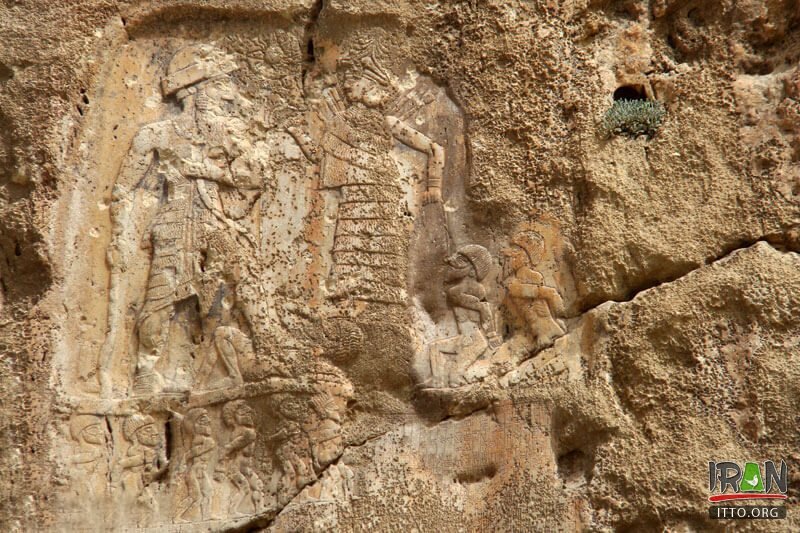Discover Iran’s ‘oldest’ bas-relief carvings in Kermanshah

TEHRAN – Iran is somehow an open-air museum of ancient and prehistoric heritage, which testify to the colorful past of the nation yet many of them are nearly lost in time. Among those, Anubanini bas-reliefs are widely believed to be the oldest rock reliefs in the country.
They are four reliefs that are associated with the Lullubi civilization due to depicting Lullubian kings as conquerors. They can be found on the northeastern edge of the modern Sarpol-e Zahab in Kermanshah province, about twenty kilometers east of the border between Iraq and Iran. They are linked with the people known as Lullubi and Simurrums, who lived in the Zagros Mountain range almost 5000 years ago.
The kingdom of Lullubi, in the valley of the Diyala river, is mentioned several times in the cuneiform texts from ancient Iraq; the first references date to the third millennium BC (Naram-Sin’s famous Victory Stela in the Louvre), while the most recent texts belong to the Neo-Assyrian age, according to Livius.org; a website on ancient history written and maintained since 1996 by the Dutch historian Jona Lendering.
The heavily damaged can be dated to c.2000 BC because one of the reliefs has an inscription that explains that the victorious ruler is called Anubanini, and this man is also known from sources from the Isin-Larsa period. The other three reliefs probably date back to about the same age. All reliefs show the king, facing right and holding a bow and a battle-ax, standing on a defeated enemy; in the sky, symbols of the celestial deities can be seen.
On the Anubanini relief, the goddess holds two naked captives, which are tied to each other with ropes. Below the king and the deity, six other prisoners of war can be seen. This relief is the most interesting of the quartet: not only because it is well-preserved, but also because it was the model of the Achaemenid king Darius’ Behistun relief, which is about fifteen centuries younger.
Below the Anubanini relief, a fifth monument can be discerned: it dates back to the Parthian age and shows a king named Gotarzes, seated on a horse, and a man - perhaps a governor or a satrap - who appears to be saluting him. There were two Parthian kings with this name: Gotarzes I was a rebel who controlled large parts of the empire from 91 to 87 BC, while Gotarzes II ruled from 39 to 51 CE.
It is worth saying that Kermanshah is a cradle of civilization due to its antiquity and having Neolithic sites that have been yielded rich collections of stone tools and fossil bones.
AFM
